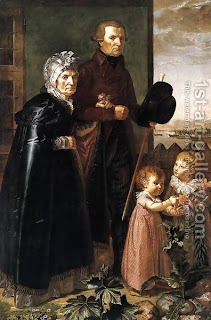Ki Tavo - Evil is a mirror image of Good

Previously we explained how bringing the first fruit to the Temple helps protect the Cosmic Female from Evil Forces. We also saw that the eleven curses pronounced on the mount Eival are related to the eleven spices burned in the Temple, and how both reflect the Sefirot of Good and of Evil.
Now we can discuss the structure of the forces of Evil in more detail. The phrase, “Cursed is the person who makes a sculptured or cast idol” is related to the Erech Anpin (Long Face) of the Evil forces, or the Husks. So far, we've seen the Erech Anpin (Long Face) as one of the higher spiritual forces (called Parzufim) in the world, as related to the ways of God's interactions with the world. Since the evil forces are an (almost) mirror image of the good ones, now we are looking at the evil force named in the same way.
That is why the Torah says that one will “places it in a hidden place” - hidden place is the reference to the hidden force of Erech Anpin, who is concealed beyond and with the help of the highest world of “Nearness”- nearness to God. If one counts the words in this phrase (אָרוּר הָאִישׁ אֲשֶׁר יַעֲשֶׂה פֶסֶל וּמַסֵּכָה תּוֹעֲבַת יְהוָה, מַעֲשֵׂה יְדֵי חָרָשׁ--וְשָׂם בַּסָּתֶר), from the beginning to the word “[hidden] place,” he will find exactly thirteen words. That is in reference to another name of the Long Face, or Atika Kadisha, the Ancient Holy One. His beard has thirteen strands, hints to the highest secret of the world, revealed by Rabbi Shimon bar Yochai to his students in his lecture called "Idra Rabba", "Large field."
The next phrase, about a man who curses his father and mothers is in reference to the Supernal Father and Supernal Mother. After this come the next five curses, and they correspond to five Sefirot of Zeir Anpin, the Cosmic Man, and then comes the “cursed is the man who sleeps with his sister” - in reference to the Cosmic Woman, the beloved of the Cosmic Man, for she is indeed his sister. Still, the Evil forces are subservient to the Good, and are not a complete mirror image, hinting at Good's final victory.
Art: Philipp Otto Runge - The Artist's Parents